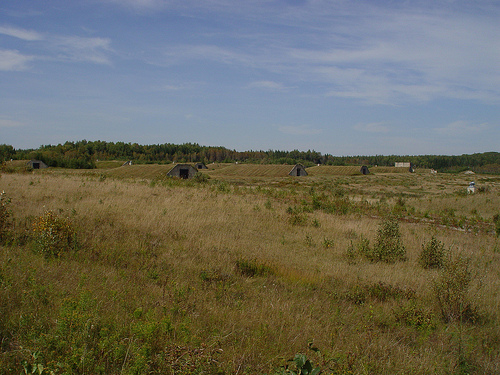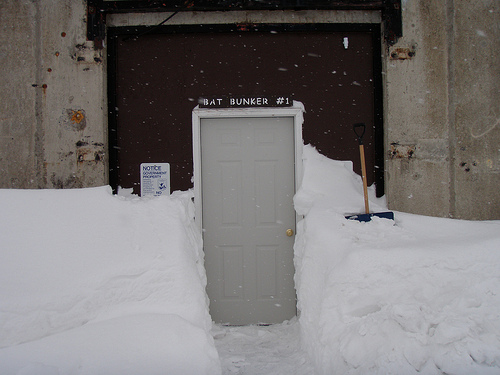A lot has happened since I first wrote about White-Nose Syndrome, the fungal disease that has devastated bat populations in North America. The disease, caused by the cold-loving fungus Geomyces destructans (now renamed Psuedogymnoascus destructans), has been identified in many more places, including most recently confirmed cases in Georgia, South Carolina, Illinois and Missouri in the United States and Prince Edward Island, Canada.
Controlling the spread of this disease is a tremendous problem, because as I indicated in a previous blog post, keeping a hardy fungus from spreading among a population of densely packed small animals in tiny, cold damp areas is not a simple task.
This problem is going to require creative solutions, and scientists at the U.S. Fish and Wildlife Service may have come up with a great idea that answers two questions: How do you control the spread of White-Nose Syndrome and what do you do with 43 unused Air Force bunkers?
The bunkers are part of the now defunct Loring Air Force Base in Aroostook County, Maine. During the cold war years, Loring was the largest base in the United States Strategic Air Command and was the first operational nuclear weapons facility in the United States that provided storage and aerial delivery of nuclear warheads. However, the base was closed in 1994. The air force base itself was redeveloped, and the land surrounding the base, including 43 storage bunkers, was transferred to the U.S. Fish and Wildlife Service. The Aroostook National Wildlife Refuge was established and now provides grassland habitat for many bird species. The grass-covered roofs of the bunkers themselves serve as nesting habitat for birds, but scientists have wondered if something more could be done with the bunkers themselves.
The White-Nose Syndrome problem might present an opportunity.
Could the abandoned bunkers be turned into cave-like habitat? If bats could spend their winters in the bunkers, in less crowded conditions to reduce spreading of the fungus, the bunkers, with their concrete walls and floors could even be decontaminated in spring and summer.
In Fall 2012, U.S. Fish and Wildlife Service staff modified one of the bunkers to improve temperature regulation and increase humidity. Artificial roosting substrates were added along with four solar-powered cameras. Then, in the latter part of December, 30 little brown bats were transferred from Vermont and New York to this bunker where they spent the winter. Nine of the thirty survived the winter in the bunker.
Although overwinter survival rates are not ideal, the trial showed that bats can survive capture, transport and hibernation in the artificial system, and with some work the survival rate can be improved. It’s possible that abandoned Air Force bunkers may become the little brown bat’s best friend in a war against a cold-loving fungus.
For further reading:
White-Nose Syndrome http://whitenosesyndrome.org/
Articles for White-Nose Syndrome (Google Scholar)
National Wildlife Health Center
Michele Arduengo
Latest posts by Michele Arduengo (see all)
- An Unexpected Role for RNA Methylation in Mitosis Leads to New Understanding of Neurodevelopmental Disorders - March 27, 2025
- Unlocking the Secrets of ADP-Ribosylation with Arg-C Ultra Protease, a Key Enzyme for Studying Ester-Linked Protein Modifications - November 13, 2024
- Exploring the Respiratory Virus Landscape: Pre-Pandemic Data and Pandemic Preparedness - October 29, 2024


